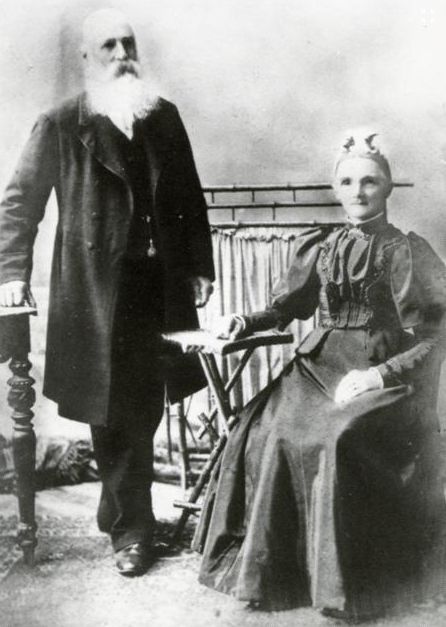by Margaret Collister

John Bowmer, aged 25, arrived in Sydney on the “Irene” on 16th October 1852 with his wife, Eliza Maria aged 28 and their infant daughter Fanny, born in 1852, another child having died at sea on the way out.
John was a gardener and was born at Rephem in Lincolnshire, England where his father, Abraham, was a groom. His mother was born at Bully Gloucestershire.
John and Eliza Maria were married at Cottesmore in Rutlandshire (the smallest county in England) in 1849 and when they first arrived in Sydney they lived at Woolloomooloo before moving to Stanmore near where Newington College is now situated.
In 1862 John bought land in Rockdale at the corner of West Botany and Bryant Streets where he worked a market garden. He later sold some of this land to James Wilson who built the stone house still standing opposite Rockdale Park in West Botany Street which now belongs to Bayside Council and is known as “Wilson’s farmhouse”. The stone for this house was quarried nearby. The Bowmer house was in Bryant Street at the side of the Wilson farmhouse and the property stayed in the family for three generations until it was sold in 1968.
There were 10 children of this marriage and 17 grandchildren.
John played a leading role in municipal affairs. In the early days of the West Botany Council his work in West Botany Street had so impressed the Council that it decided to form a further 24 chains (482 metres) of road in the street at a cost of £30, he being employed almost full time by the Council as its first road construction contractor.

In 1876 John was elected to the Council. The only unfortunate incident on the Council that year occurred in April when some person with evil intent sent John a packet of black spiders through the post. In one of its very few unanimous decisions the Council recorded its “disgust at the unmanly conduct of the person or persons who sent the packet to the Mayor”. The reason for this was that Bowmer was a most gentlemanly and patriarchal figure and enjoyed enormous popularity both with the Council and the other residents.
During stormy protests and complaints during the years to 1880 only the steady hand of Alderman Bowmer (now in his third term as Mayor) kept the ship of state on an even keel. He presided at the luncheon on 15 October 1884 to celebrate the opening of the railway line as far as Hurstville. He was mayor for seven terms from 1878 to 1884. In 1884 he was appointed the first Returning Officer for the State electorate of St. George. To celebrate this fact he was given a medal by his fellow clerks to be hung on his watch chain.
He is mentioned in the Centennial history of N.S.W. in 1888.
He was one of the founders of the West Botany Wesleyan Church (now the Uniting Church in Bay Street, Rockdale). In those days it was known as the Rocky Point Chapel, attached to the Newtown circuit.
The movement towards municipal incorporation in Kogarah began at a public meeting held on Monday, April 7, 1884, at the Beavers’ Gardeners’ Arms Hotel, Kogarah at which there was an attendance of 40 persons and J. Bowmer, Mayor of West Botany presided.
He died on December 13, 1903 at Rockdale aged 76 and was buried in the Wesleyan cemetery at Sutherland.
As one of its pioneers John Bowmer made a significant contribution to the development of our district in the days when life was a very different proposition from what it is today.
This article was first published in the September 1981 edition of our magazine.
Browse the magazine archive.

